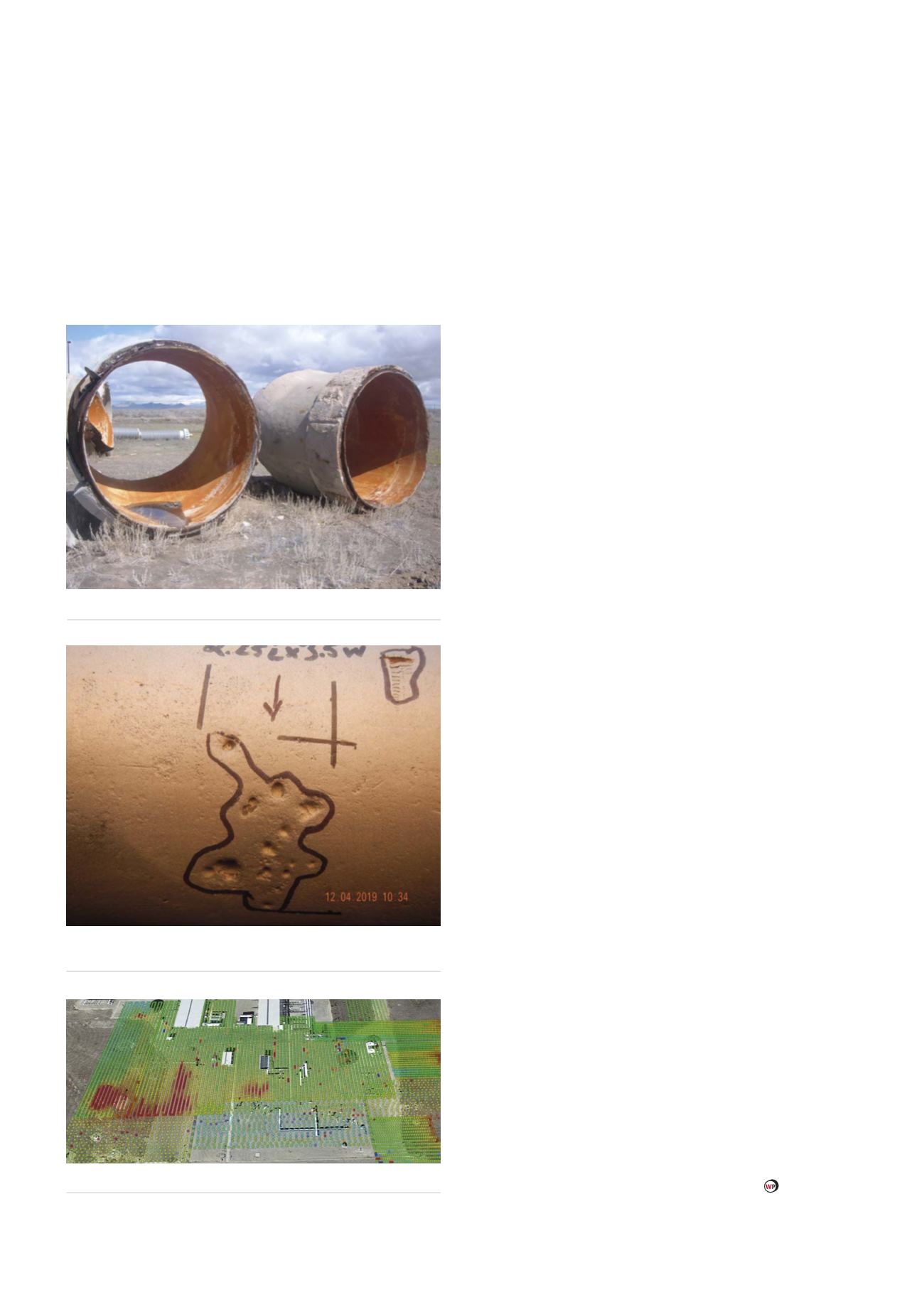
of the programme. Before selecting a company to assist
with a modified ECDA-like programme, it is important
to verify that the company has solid experience in the
entire process. Experienced companies will be able to
provide references for their previous ECDA work. Selecting
a company with proven ECDA experience and verifiable
references significantly increases the probability of success
for an ECDA-like programme.
Proper survey techniques coupled with the principles of
ECDA can help identify:
)
Poorly coated areas.
)
Electrical interference conditions.
)
Potential areas of CP current shielding.
)
Contact with other metallic structures.
)
Defective electrical isolation joints.
)
Localised corrosion.
Case study
When a chemical plant noticed several leaks in a small-
diameter pipeline, the principles of ECDA were applied
to determine the root cause of the corrosion. While the
pipeline is not regulated, its continued service is vital to
plant operations. First, a detailed historical and current
review of the pipeline’s operations, construction, and CP
history was performed. Second, standard indirect inspection
surveys CIS, DCVG, and ACCA were performed on buried
portions of the pipeline and atmospheric inspections were
performed on unburied portions of the pipeline. It was
determined during the surveys that above-grade portions
of this pipeline were being continuously misted from
the steam coming off from one of the chemical plant’s
units. Also, soil and water testing determined that the
environments to which both the above-grade and below-
grade portions of pipeline are subjected are very corrosive
to pipeline grade steel.
The results of the pre-assessment and indirect inspection
are already being utilised to justify the addition of a more
robust coating system for the above-grade portions of pipe
and the addition of some CP. Currently, the plant is planning
to validate the results of the pre-assessment and indirect
inspection by excavating and inspecting the pipe at one
location. The plant will then finish the ECDA by performing a
post-assessment and recommendations for regular inspection
of both the above-grade and below-grade portions of piping.
Conclusion
The principles of the ECDA process have been effectively
utilised on:
)
Liquid and natural gas pipelines.
)
Water pipelines – concrete cylinder pipe, steel pipe and
ductile iron pipe.
)
Chemical and gas pipelines inside plants.
When performed by an experienced provider, ECDA
principles can be an effective method for locating coating
damage and insufficient CP that can lead to corrosion –
allowing operators to stay ahead of future damage and keep
their assets operating safely and in good condition. Corrpro
has performed over 900 ECDAs on regulated pipelines over
the course of 18 years, and has utilised ECDA principles on
thousands of assets across its 36-year history.
Figure 4.
Pitting located with CIS/DCVG, survey alignment, and
indication prioritisation.
Figure 5.
Cathodic protection grid survey.
Figure 3.
Corrosion damage of a large-diameter pipe.
82
World Pipelines
/
MARCH 2020








